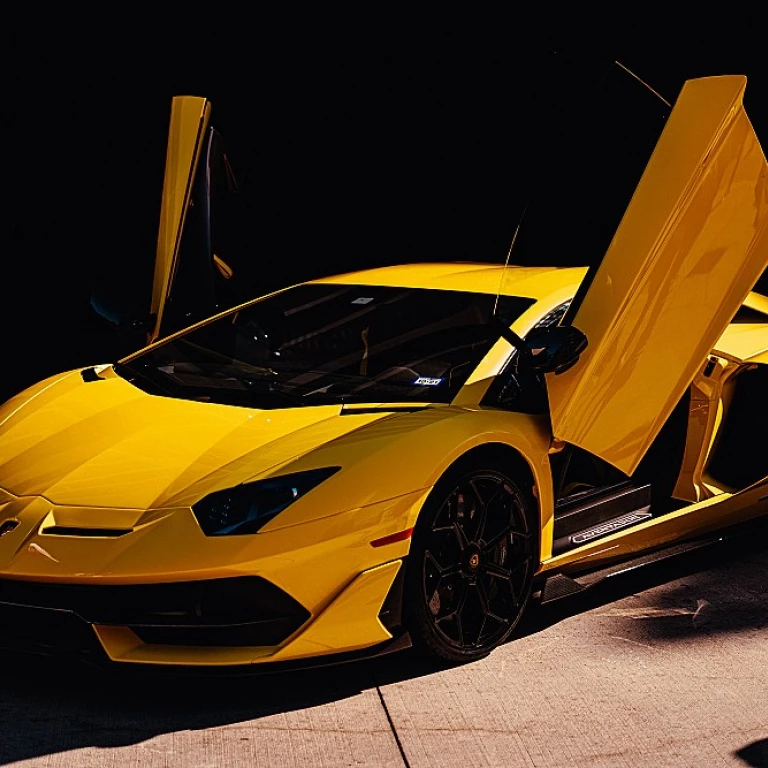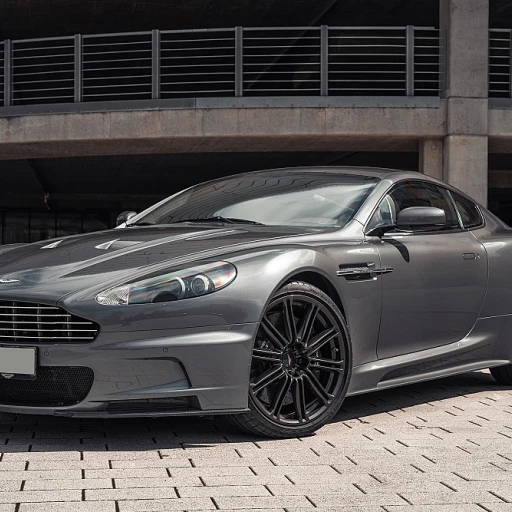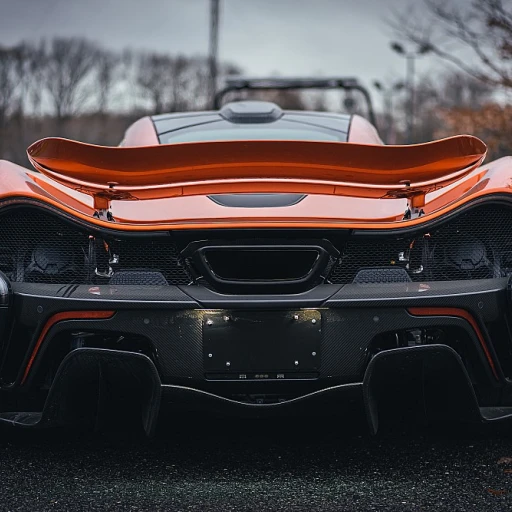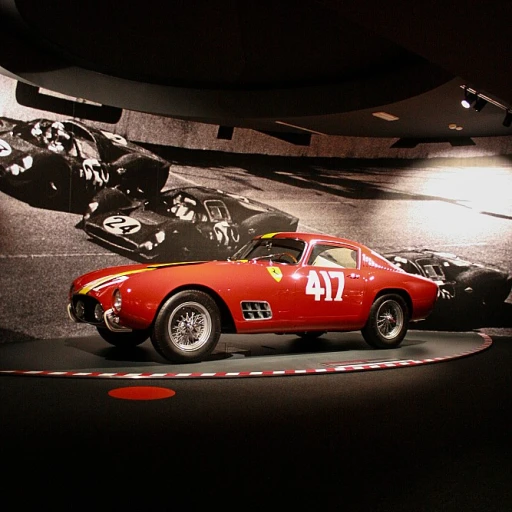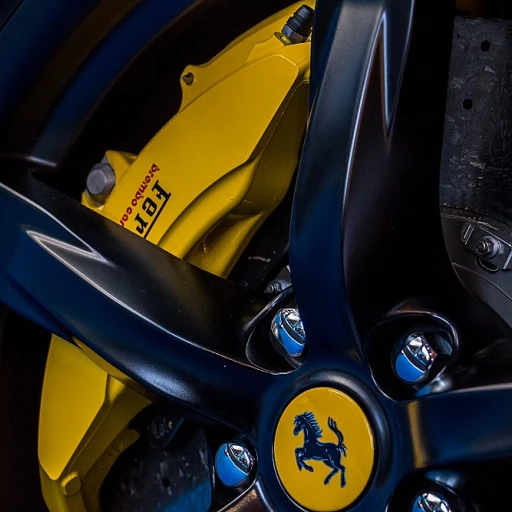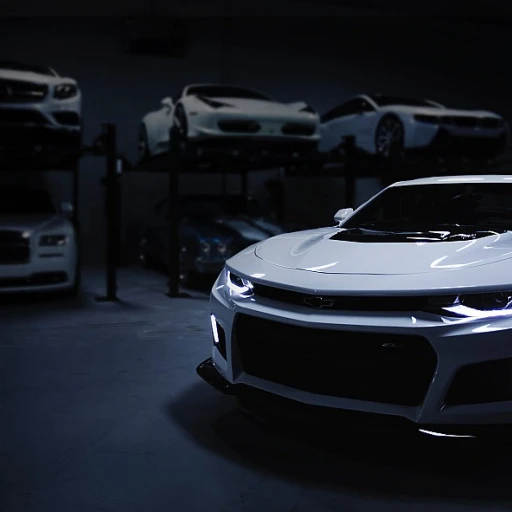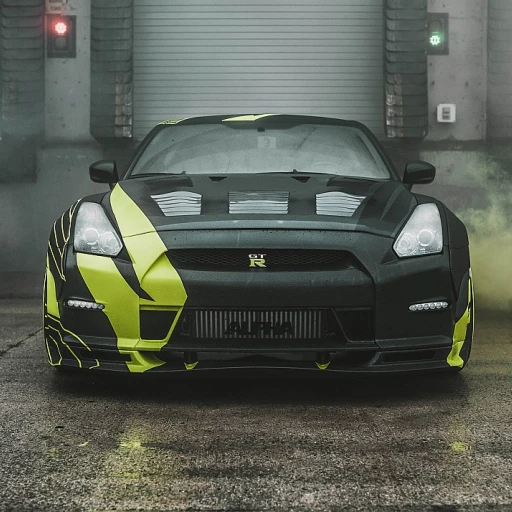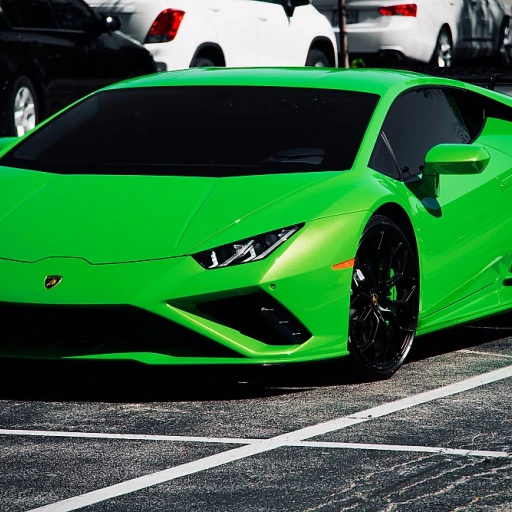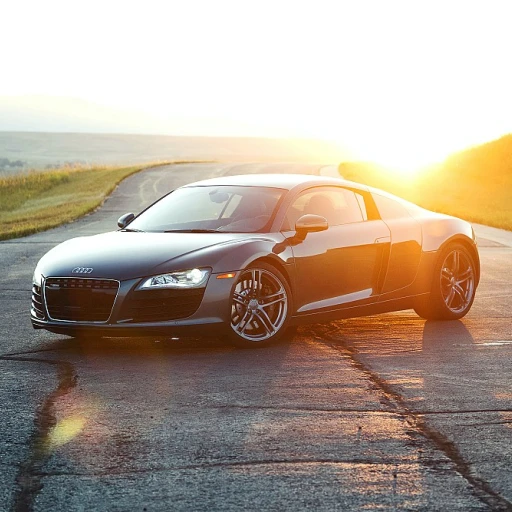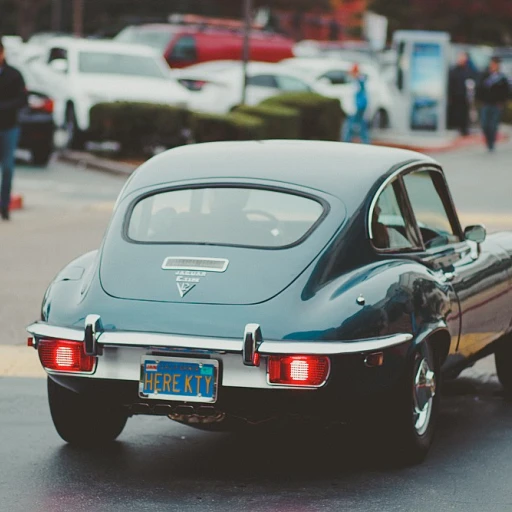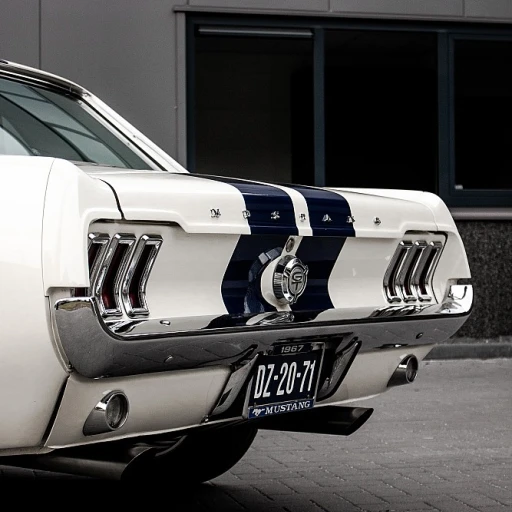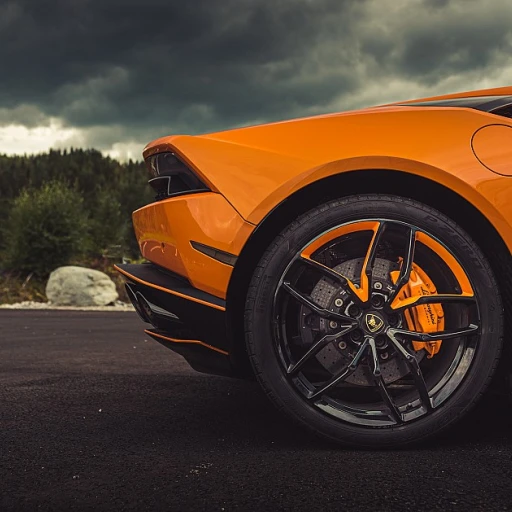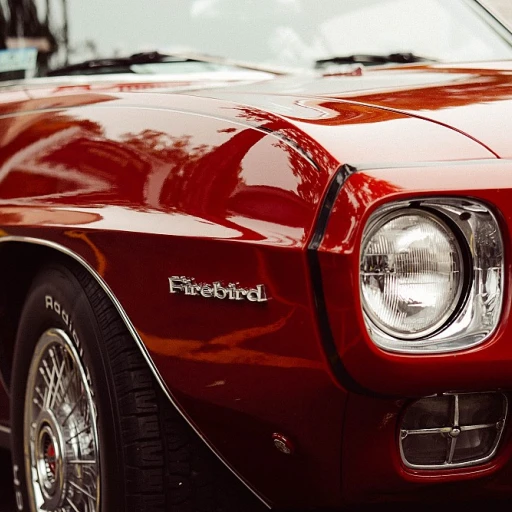
The rise of luxury cars in the 1920s
Luxury cars take center stage in the roaring twenties
The 1920s marked a period of unprecedented growth and innovation in the automobile industry, a time when luxury cars began to dominate the roads with unparalleled elegance and sophistication. Henry Ford's assembly line revolution during the previous decade had made automobiles accessible to the masses with the affordable Ford Model T, but the 1920s saw a different breed of cars emerge. These were not just modes of transportation; they were glamorous symbols of wealth and status.
Automobiles as symbols of prestige
During the roaring twenties, owning a luxury car became a sign of affluence, a trend fast embraced by the elite. The era saw the birth of iconic brands like Rolls-Royce, known for its impeccable craftsmanship and the legendary Silver Ghost. The Silver Ghost, first produced in 1906, continued to gain acclaim well into the 1920s, embodying the opulence and sophistication of the period.
Luxury cars from manufacturers such as Duesenberg, Hispano-Suiza, and Bugatti began to grace the boulevards of New York and the European capitals. The Duesenberg Model J, introduced in 1928, was a pinnacle of performance and style, earning its place as a symbol of American luxury.
Industry transformation and innovation
This era wasn't just about exquisite exteriors; innovations under the hood were as groundbreaking. Cars like the Bentley 3 Litre combined speed with elegance, setting the pace with its powerful engine. Similarly, the Bugatti Type 35, renowned for its engineering prowess, dominated the racing circuits with 2,000 race wins by the end of the decade. The Bugatti Type Royale further cemented Bugatti's reputation for luxury and performance, although it was produced in extremely limited numbers.
Iconic models that defined the era
Iconic models that defined the era
In the 1920s, the world of luxury cars was epitomized by some truly grandiose models, each a glittering symbol of wealth and sophistication. These opulent vehicles weren't just about getting from A to B; they represented a fusion of craftsmanship, cutting-edge engineering, and high design.Ford Model A: Henry Ford's luxury leap
Henry Ford, renowned for the affordable Model T, took a bold step into the luxury market with the Ford Model A. Introduced in 1927, this model offered a significant upgrade in terms of style, comfort, and performance. With a new 200.5 cubic inch (3.3 L) L-head inline 4-cylinder engine, the Model A could reach a top speed of roughly 65 mph (105 km/h) – a far cry from its predecessor and a notable achievement for its time. [source]
Rolls-Royce Silver Ghost: Pure luxury on wheels
When discussing the 1920s, one cannot overlook the grandeur of the Rolls-Royce Silver Ghost. This masterpiece of British engineering was hailed as the "best car in the world" in its time, thanks to its incredible reliability and exquisite craftsmanship. The Silver Ghost featured a 7.4 L inline-six engine that provided a remarkably smooth ride, epitomizing the luxury car segment.Bugatti Type 35: The racing elegance
Bugatti’s Type 35, although primarily known for its success on the racetrack, also served as an elite driver's dream on the roads. Designed by Ettore Bugatti, the Type 35 stood out with its distinctive art deco styling and robust engineering, featuring a 2.0 L straight-eight engine that could reach speeds of up to 125 mph (201 km/h). This model not only oozed sophistication but also set a high benchmark in automotive performance.Duesenberg Model J: The epitome of American extravagance
The Duesenberg Model J, released in 1928, was the embodiment of American luxury. This beast was powered by a 6.9 L straight-eight engine that produced 265 hp, allowing it to achieve speeds of up to 119 mph (191.5 km/h). With its extraordinary performance and lavish interiors, the Model J quickly became a status symbol for America's elite, including celebrities and even royalty.Mercedes-Benz SSK: Speed and style in one package
Another gem from the era was the Mercedes-Benz SSK. Known for its raw power and agility, the SSK was equipped with a supercharged 7.1 L inline-six engine capable of generating 300 hp, making it one of the fastest cars of its day. Its streamlined design and engineering excellence made it a favorite among racing enthusiasts and collectors alike.Alfa Romeo 6C: Italian artistry on wheels
The Alfa Romeo 6C was a paragon of Italian automotive artistry and engineering precision. Launched in 1927, the 6C was celebrated for its innovative design and superior handling. It boasted a 1.5 L inline-six engine that provided steady and reliable performance, striking a perfect balance between luxury and sportiness.Preserving the legacy
Today, these timeless models continue to captivate car enthusiasts and collectors around the globe. Many classic car collection and restoration experts invest considerable time and resources to preserve the elegance and allure of these 1920s masterpieces. Their commitment ensures that the grandeur of automotive history remains accessible for future generations to admire and cherish.These iconic cars symbolize the zenith of luxury and elegance during the automotive golden age, each playing a unique role in the rich tapestry of car history. Their legacy continues to inspire modern-day designs, as manufacturers strive to recapture the timeless elegance and innovation of the 1920s.The engineering marvels under the hood
The heart of luxury: engines that ruled the era
When discussing the magnificence of luxury 1920s cars, it's impossible not to marvel at the engineering wonders hidden beneath their hoods. These machines were more than just beautiful—they were a testament to the technological advancements of their time.
The Duesenberg Model J, a symbol of unparalleled performance, was equipped with a powerful 6.9-liter straight-eight engine. This titan could produce an impressive 265 horsepower, a monumental feat for its time. In fact, it was capable of speeds up to 119 mph, a velocity that left contemporary competitors in the dust.
Similarly, the Rolls-Royce Phantom I came with a sophisticated 7.7-liter inline six-cylinder engine. This beauty-of-a-machine provided a refined yet robust driving experience. The blend of power and sophistication in the engine design was a hallmark of the marque, maintaining its silent and smooth ride even at higher speeds.
The Mercedes-Benz SSK, a machine synonymous with speed, housed a supercharged 7.1-liter straight-six engine under the hood. Designed by the legendary Ferdinand Porsche, the SSK could easily exceed 120 mph. It served as a benchmark for future luxury sports cars and remains an icon in the history of automotive engineering.
A journey through the artful design of the Bugatti Type 35 reveals a detailed approach to power and performance. Its 2.3-liter straight-eight engine boasted a then-revolutionary alloy construction, delivering both durability and lightness. This design contributed to its success in countless races, including the Targa Florio, where it claimed multiple victories.
The engineering prowess of these vehicles was not just about raw power; it also encompassed innovations in transmission and brakes. For example, many cars of the era, including the Alfa Romeo 6C 1750, adopted servo-assisted light alloy drum brakes, which dramatically improved stopping power and driving safety. The Alfa's inline-six engine became legendary for its blend of performance and reliability, making it a revered model among luxury enthusiasts and racers alike.
Thus, while the elegance of the 1920s luxury cars was undeniable, it was what lay beneath their polished exteriors that truly defined their greatness. These engineering masterpieces set the stage for future developments in the automotive world, blending unparalleled power, innovation, and reliability that is still admired and sought after in the luxury car market today.
Design trends and the art deco influence
Exploring the design trends of the 1920s
The 1920s marked a pivotal moment in automotive design, with influences that have continued to inspire luxury cars to this day. One of the most significant trends of this era was the incorporation of Art Deco elements, which brought a newfound elegance and sophistication to automobiles. Art Deco, characterized by its bold geometric shapes and lavish ornamentation, found a natural home in the luxury car industry, where opulence and grandeur were already key selling points.
Icons of the era, like the Rolls-Royce Phantom and the Bugatti Type 35, showcased how meticulously crafted details could enhance both the aesthetic appeal and the perceived value of a car. The Phantom, for instance, featured intricate interiors with high-quality wood veneers and plush upholstery, reflecting the Art Deco ethos of luxury and style (source: Rolls-Royce Motor Cars).
Another major player was Mercedes-Benz, whose SSK model famously embraced streamlined forms and elaborate grilles, making it both a performance powerhouse and a design marvel. The SSK, with its light alloy drum brakes and servo assisted braking system, also highlighted the period's engineering advancements, marrying form with function (source: Mercedes-Benz Classic Cars).
Not to be outdone, manufacturers like Hispano Suiza and Lancia Lambda pushed the boundaries with innovative technical features and distinctive styling. Hispano Suiza, known for its exquisite craftsmanship, integrated Art Deco motifs into their cars’ designs, resulting in classics like the H6B. Lancia Lambda, on the other hand, introduced pioneering ideas such as the front-wheel drive mechanism, which broke new ground in the way cars looked and performed (source: Lancia Media).
The artistic flourishes that set cars apart
One can't discuss 1920s luxury cars without mentioning the Bugatti Type Royale. This legendary model, only six of which were ever made, epitomized the marriage of artistic design and automotive engineering. Each Type Royale was a unique piece of art, with custom bodywork commissioned by some of the most prestigious coachbuilders of the time. Ettore Bugatti, the genius behind the brand, famously said, “Nothing is too beautiful, nothing is too expensive,” which perfectly captured the ethos of 1920s luxury car design (source: Bugatti Tradition).
These exquisite vehicles also featured lavish materials such as mother-of-pearl inlays, gold-plated fittings, and hand-painted details, ensuring that every car was a masterpiece on wheels. For example, the Duesenberg Model J was famed for its elaborate finishes and bespoke details, making it a favorite among Hollywood’s elite. Clark Gable, an iconic movie star of the era, drove a custom Duesenberg that epitomized the glamour and elegance of 1920s Hollywood (source: Duesenberg History).
The role of luxury car manufacturers
Crafting a legacy: the makers behind the luxury
In the 1920s, the prestige of luxury cars soared, with several marquee names making waves. Rolls-Royce, known for the Rolls-Royce Phantom, epitomized class and excellence. Rolls-Royce's relentless pursuit of perfection was akin to Henry Ford's passion for affordability but targeted at showcasing pristine craftsmanship and innovation. The Phantom was revered not just for its performance but for its attention to detail, turning heads across Europe and America. Figures like Ettore Bugatti played a significant role in this golden age. His mastery was evident in his masterpieces like the Bugatti Type 35 and Type 41 Royale, known for their exceptional speed and exquisite design. The Type 41 Royale was even dubbed the "car of kings" due to its opulence and grandeur. Mercedes-Benz, with its model Benz SSK, was at the forefront too, combining speed and luxury seamlessly. The SSK's supercharged engine was a marvel on the roads, and its sleek aesthetics made it a standout in the luxury segment. On the American front, the Duesenberg Model J became synonymous with the phrase "it's a doozy," a testament to its superior engineering and lavishness. The Duesenberg Model J's legacy was bolstered by its association with Hollywood stars and industrial magnates, making it a symbol of status and wealth. Not to be left behind, Bentley made significant strides with the Bentley 4.5 Litre. Renowned for its incredible performance, the car won several races, including the famous Le Mans, proving that luxury and speed could go hand in hand. Hispano-Suiza, while perhaps less known in modern times, was a juggernaut in the 1920s luxury car market. Their craftsmanship combined the elegance of art deco influences with cutting-edge technology, making them a favorite among European aristocracy. These companies didn't just make cars; they crafted legacies that integrated intricate designs, powerful engines, and a dash of glamour, leaving an indelible mark on the luxury car industry. From mesmerizing design trends to engineering marvels under the hood, they set standards that contemporary luxury car makers still aspire to.Famous owners and their luxurious rides
Hollywood stars and their extravagant wheels
In the 1920s, the allure of luxury cars extended far beyond the affluent business moguls to capture the hearts of Hollywood elite. Silent film stars and magnates of the silver screen paraded their wealth and success through their choice of automobiles. One notable enthusiast was Rudolph Valentino, famously associated with the Isotta Fraschini Tipo 8A, a car synonymous with Hollywood glamour. His passion for this luxury vehicle not only showcased his stardom but also highlighted the Italian engineering excellence of the time.Royal rides and aristocratic affections
Royalty and aristocrats became equally smitten with luxury 1920s cars. King George V of the United Kingdom was a notable patron of Rolls-Royce, and his preference for the Rolls-Royce Silver Ghost mirrored the vehicle's reputation for unparalleled reliability and craftsmanship. The Silver Ghost, often termed the 'best car in the world,' became a symbol of opulence among European royalty, accentuating the strong connection between luxury cars and social status.The choice of industrial tycoons
In America, industrial heavyweights like Henry Ford, despite his association with the more common Ford Model T, indulged in the luxury car trend as well. Henry Ford Sr. was known for flaunting high-end beauties from companies like Lincoln, helping cement their status as luxury icons. Similarly, Errett Lobban Cord, founder of the Cord Corporation, was captivated by the grandeur of the Duesenberg Model J, showcasing his appreciation for American automotive excellence.Icons of automotive leadership
Beyond individual owners, luxury car manufacturers themselves were often driven by influential personalities who embodied the prestige of their creations. Ettore Bugatti, founder of Bugatti, was a charismatic figure whose personal Bugatti Type 41 Royale reflected his visionary approach to automotive design. Meanwhile, W.O. Bentley, whose cars were the epitome of British luxury and performance, often drove his company’s creations, ensuring that Bentley retained its elite status in the luxury market.Echoes through history
Fame and luxurious rides went hand in hand during the golden age of the 1920s. Whether through the elegance of Bugatti or the sophisticated design of Rolls-Royce, these cars weren't mere vehicles but extensions of their owner’s status and personality. The fact that these meticulously designed cars became associated with such high-profile figures only solidified their legendary status within the luxury sector. Even today, the mystique surrounding these iconic cars lives on, often celebrated through classic car collections and restoration projects that aim to preserve their storied past. For an in-depth look at how these luxury cars are remembered and revered today, you might enjoy this article on automotive legends.The impact of the Great Depression on luxury cars
Luxury cars and the economic downturn
The Great Depression of the 1930s had a significant impact on the automotive industry, and luxury cars were not spared. As prosperity gave way to economic hardship, the demand for opulent automobiles plummeted. Many manufacturers had to adapt or face extinction.
Duesenberg, known for creating some of the most luxurious vehicles of the era, saw its orders drastically decline. Despite their reputation for producing high-quality and prestigious vehicles, the company couldn't sustain itself and ceased production in 1937. For those interested in uncovering more about such iconic models, you might find this deep dive into automotive legends quite enlightening.
Simultaneously, companies like Rolls-Royce and Bentley also faced challenges. Rolls-Royce, for instance, reduced their workforce and cut back on production to survive the economic downturn. Their Phantom models, known for elegance and luxury, faced reductions in sales as buyers' priorities shifted to more economical vehicles.
Despite these hurdles, some companies, like Ford, managed to navigate the crisis. Henry Ford's focus on affordability with the Model T helped maintain his company's viability. Leveraging their flexibility and innovative practices allowed them to weather the storm better than some of their less adaptable competitors.
Moreover, the impact of the Great Depression wasn't limited to the manufacturers. The secondary market for luxury cars also saw a slump, as potential buyers were scarce. This period saw a significant shift in the categorized market, where even prestigious makes like Mercedes-Benz and Bugatti struggled.
However, some collectors found opportunities amidst the turmoil. With the value of luxury cars dropping, savvy buyers could acquire vintage vehicles at a fraction of their original prices, essentially preserving these automotive gems for future generations.
Preserving the legacy: classic car collections and restorations
Restoring the glory of 1920s luxury vehicles
The dedication to preserving the legacy of luxury 1920s cars is evident in the meticulous efforts of classic car collectors and restoration experts. These aficionados are driven by a passion for bringing these vintage beauties back to their former glory. The restoration process is an intricate one, often taking years and involving an army of skilled craftsmen.
The art of meticulous restoration
The challenge of restoring these cars is immense. It involves tracking down original parts, which can be on the brink of impossibility. Skilled artisans work lovingly to repair or even recreate these parts by hand, maintaining the car's authenticity. A perfect example is the restoration of the 1929 Duesenberg Model J, which requires sourcing original components to ensure that every detail matches the historical specifications.
Renowned collections and notable restorers
Collections like the Mullin Automotive Museum and the Revs Institute offer a glimpse into this world of careful preservation. Notable figures like Ralph Lauren have assembled awe-inspiring collections that not only showcase these masterpieces but also underline their historical importance. Ralph Lauren's collection includes treasures like the 1929 Bentley Blower and the exquisite Bugatti Type 57SC Atlantic.
Modern technology meets historical accuracy
While authenticity remains paramount, modern technology also plays a significant role in restoration. 3D printing, for example, has been employed to produce rare parts. This juxtaposition of old and new ensures that luxury 1920s cars not only retain their original grandeur but also benefit from modern precision. A study in Automotive Restorations reveals that around 25% of the parts in some cases are reproduced through advanced printing techniques.
The role of car shows and auctions
Car shows and auctions are pivotal in showcasing these restored marvels. Prestigious events like the Pebble Beach Concours d'Elegance and the Amelia Island Concours d'Elegance are where these cars shine, often fetching prices in the millions. Luxury car enthusiasts gather to admire and bid on these fine specimens, further driving the passion for restoration and preservation.
Preserving history for future generations
The mission to preserve the legacy of 1920s luxury cars isn't just about the cars themselves. It's about retaining a piece of history, a time when elegance and engineering craftsmanship peaked. These efforts ensure that future generations can experience the splendor and significance of these automotive masterpieces. As Gordon Buehrig, a famed designer of the era, once said, "Designing a car was like creating a piece of art that would live on for centuries."
Classic car collections and restoration activities remain a vibrant part of our cultural heritage, ensuring that the golden age of automotive elegance continues to shine brightly.

